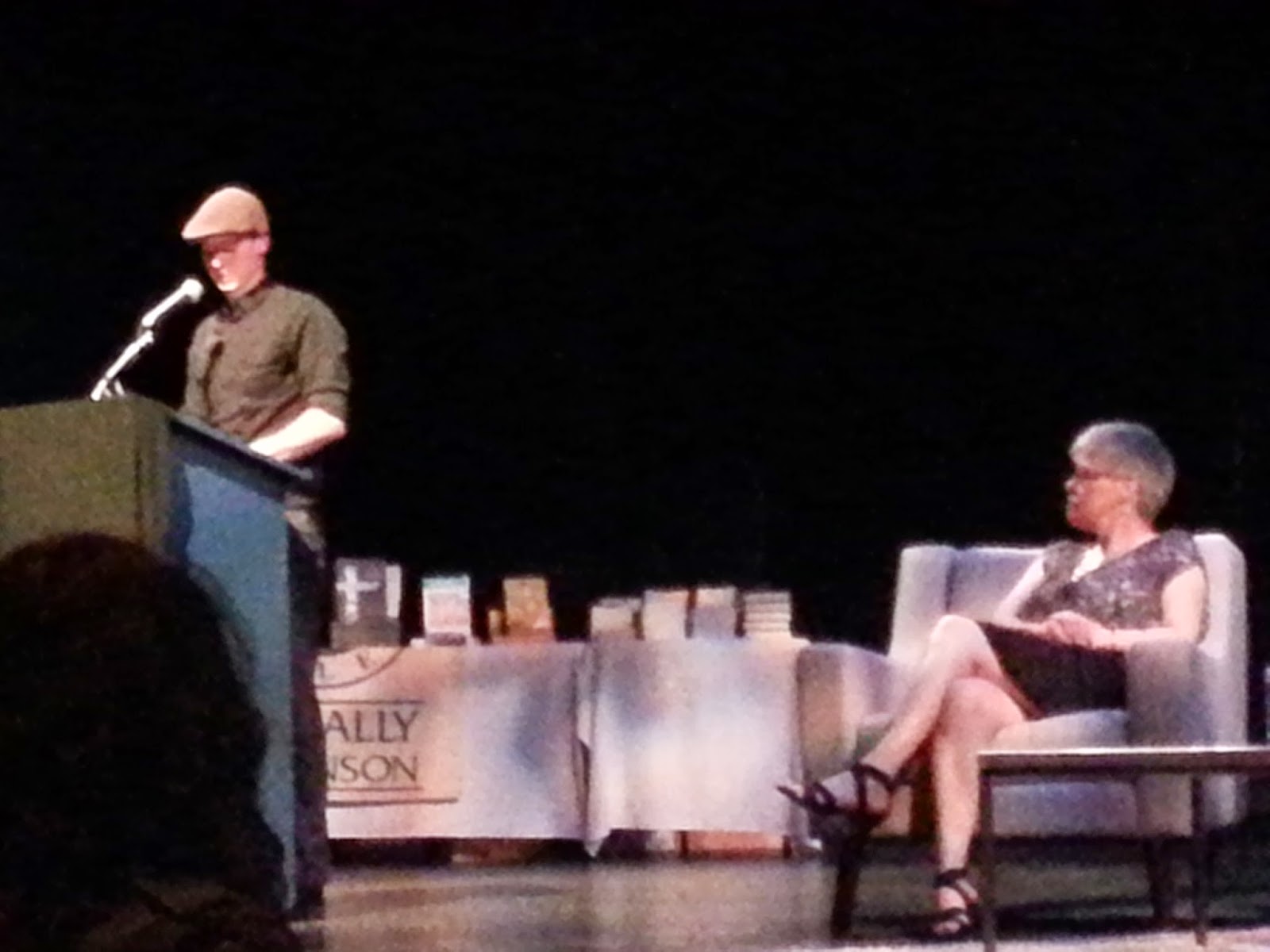by Juanita Klassen
Big
Ideas: Idle No More, Leanne Betasamosake Simpson
Millenium
Library, Carole Shields Auditorium
September
23, 2014
Before
each reading during this festival, I’ve sampled the atmosphere that precedes it.
The aura before A Pint of Bitter Murder was easy and low-key, the one preceding
Big Ideas: Valour Road was quiet and respectful, and before Big Ideas: Idle No
More the atmosphere was energetic, with lively conversation and laughter. I sat
down and waited with anticipation.
Bruce
Symaka began this event by introducing Leanne Simpson and her books: The Gift
is in the Making, Islands of Decolonial Love, and the one that we’re hearing
about today, The Winter We Danced, a collection of essays, poetry, songs and
stories taken from the collective experience of the first burst of the Idle No
More movement, during the winter of 2012-2013.
Simpson
greeted us in a beautiful language – the rhythm of it reminded me of Cree but I
forgot to ask – then introduced herself in English and revealed that she was a
recovering academic, which sparked laughter. After expressing thanks to those
who helped with this book, she then began telling the story of this complex and
organic movement.
I
found Simpson’s description of Idle No More fascinating i.e. that it is only
the most recent flowering of a continuing protest that began when the Aniishnabe
met their unpredictable new neighbours; you know, the ones who named themselves
the landlords and began abusing them and exploiting the land. She said that her
ancestors did what they could to protect the land and their children: they
protested with words, they taught traditions and language to their children,
and, they stayed alive, despite organized efforts to wipe them off the face of their
earth. This protest has been ongoing for the entire length of that
relationship; as in other abusive relationships, they are ignored by the
government until there’s a flashpoint, like Oka, Ipperwash, The 1969 White Paper,
and Idle No More, to name a few. The media focuses on these uncomfortable events
and can’t report accurately because they generally fail to understand
the enormity and nature of the ongoing historical narrative these singular
events are part of.
As
Simpson described, this particular flashpoint was an immediate reaction to Bill
C-45, a scary piece of legislation that threatened to remove environmental
protection of First Nations lands and communities with no consultation with, or
consent of, the people who lived there. A small group of women started the
appeal via social media and immediately began educating their communities about
what was going on, using the hashtag #IdleNoMore. Before long, passionate
leaders emerged representing a list of longstanding issues, such as fair
legislation over land issues, justice for missing and murdered aboriginal
women, pipeline protests out west, and the fight over fracking out east, to
name a few. I became inspired,
then excited, as Simpson continued to describe these actions of true citizens,
humans who are taking care of the land and their communities. We don’t even
have to agree with each other all the time; in fact, it’s better when we figure
out how to proceed with differences intact.
I
thought Simpson’s story of the round dance was particularly beautiful within
this context. The dance itself symbolizes letting go of grief and making a
space to remember those who have gone before you, and when the circle is formed
the ancestors dance with you. In the story of Idle No More, people threw
together many flash mob round dances, particularly in malls as Christmas
approached, to honour those who have gone before and to remind folks of what is
really important. The energy she described was engaging and irresistible, sketching
a movement that is a living organism, people within it focusing in an upward
manner, and, even though we don’t see it in the media, most of it is still
alive underground, people still working at the community level, working to
protect the land and their rights.
 Now
I’m running out of time here, but there was so much more that Simpson talked
about: like the push that Chief Theresa Spence gave the entire movement; about
the fact that this movement is far from over even though it’s off the media
radar at the moment; about the Walking With Our Sisters traveling art exhibit
and how it’s becoming its own internal inquiry and healing process; about the
exciting transformation of the Winnipeg community; about the important work of
the Native Youth Sexual Health Network that receives all the profits from this
book, and so on. I was so moved, inspired, and curious that I bought the book, The Winter We Danced, and highly recommend
it. This is a beautiful and wildly diverse collection of work, all written from
the hearts and minds of passionate citizens.
Now
I’m running out of time here, but there was so much more that Simpson talked
about: like the push that Chief Theresa Spence gave the entire movement; about
the fact that this movement is far from over even though it’s off the media
radar at the moment; about the Walking With Our Sisters traveling art exhibit
and how it’s becoming its own internal inquiry and healing process; about the
exciting transformation of the Winnipeg community; about the important work of
the Native Youth Sexual Health Network that receives all the profits from this
book, and so on. I was so moved, inspired, and curious that I bought the book, The Winter We Danced, and highly recommend
it. This is a beautiful and wildly diverse collection of work, all written from
the hearts and minds of passionate citizens. 









